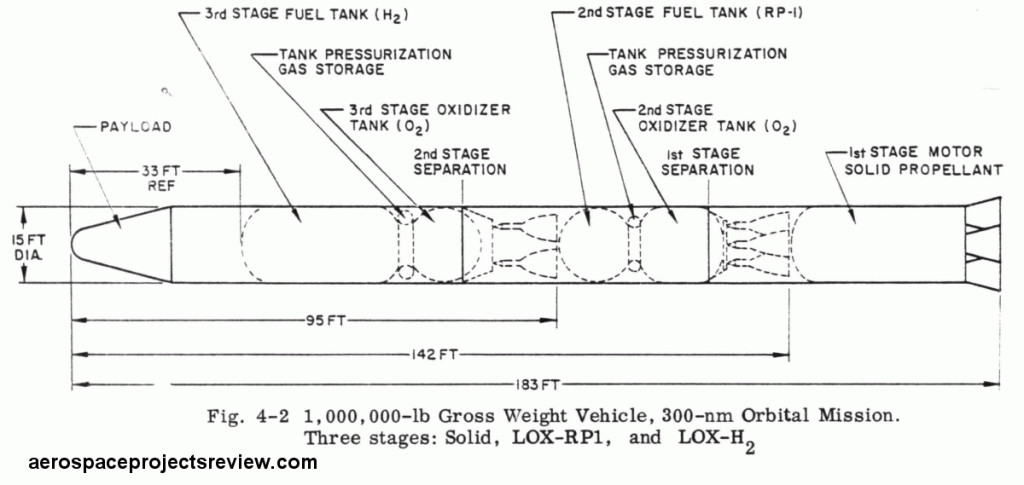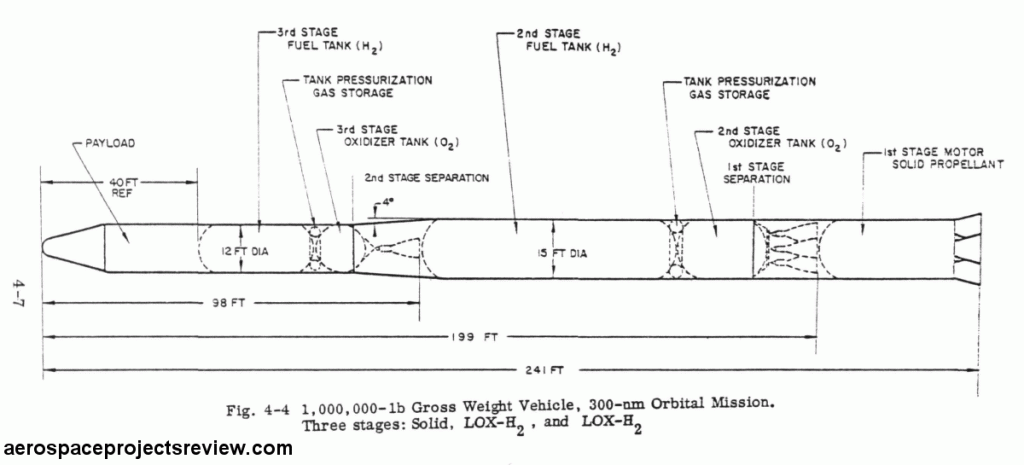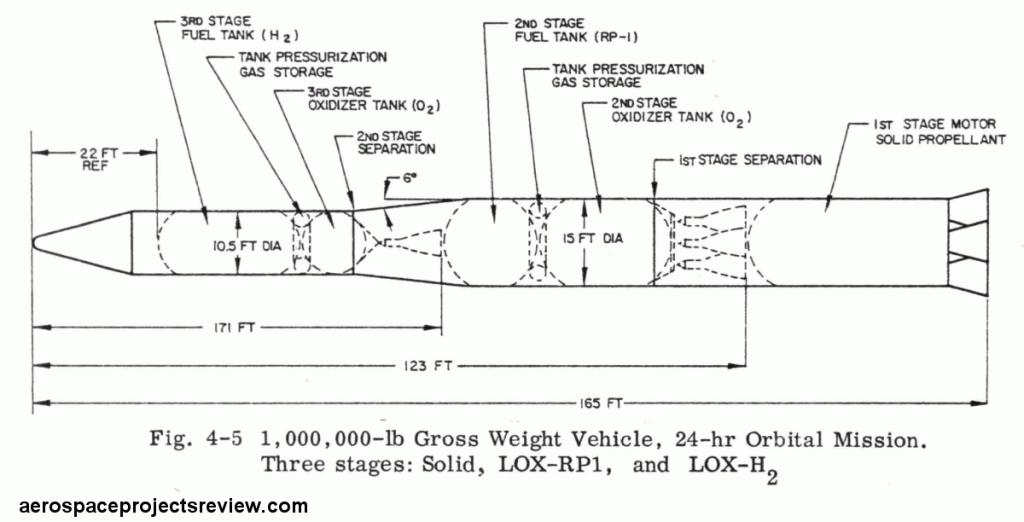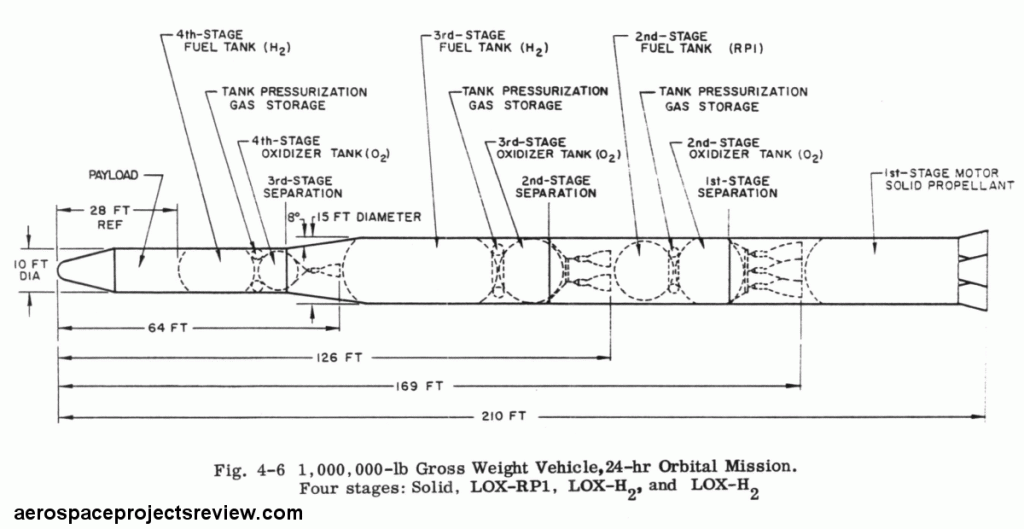In the runup to the Saturn program, American aerospace companies studied every possible variation on large launch vehicles. One idea that seemed promising was the use of large solid rocket motors, singly or in clusters, to form large booster stages. It was sensible enough… in the late 1950s large solid rockets were better developed than large liquid rockets. Solids can put out truly monstrous levels of thrust, and reasonably reliably; and they require minimal preparation once stacked up and ready to go. In contrast, liquid rockets are complex and finicky, but with the advantage of substantially higher specific impulse.
In 1959 Lockheed released the results of an early study for NASA on a series of large boosters using solid rocket motors. They studied a range of vehicles, with 2, 3 and 4 stages; 300,000, 1,000,000 and 5,000,000 pound gross weights, and targeting 300 nautical mile circular orbits, geosynchronous, escape and soft lunar landings.
Shown below are diagrams of 1,000,000-pound gross weight boosters using 180-inch diameter solid first stages (440,000 pounds of propellant) and liquid upper stages (LOX/RP-1 or LOX/LH2 for the second stage and LOX/LH2 for the third). Payload weights were given for representative vehicles rather than specific designs.
Payload: 39,800 pounds to 300 n.m.; 9,400 pounds to geosynchronous; 12,400 to escape; 3,900 pounds to soft lunar landing
Payload: 51,500 pounds to 300 n.m.
Payload: 39,800 pounds to 300 n.m.; 9,400 pounds to geosynchronous; 12,400 to escape; 3,900 pounds to soft lunar landing
Payload: 15,000 pounds to geosynchronous; 18,400 pounds to escape; 5,600 pounds to soft lunar landings



